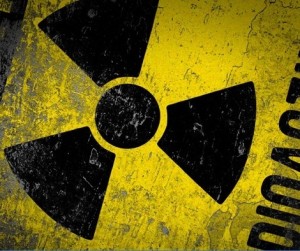In a meeting between Suga and Hiroshi Kishi, president of the National Federation of Fisheries Co-operative Associations, the fisheries association chief reiterated concerns over the reputational damage that the discharge into the Pacific Ocean may inflict on fisheries products from Fukushima Prefecture.
After the meeting at the Prime Minister’s Office, Kishi quoted Suga as saying, “The disposal of ALPS treated water is unavoidable and experts have recommended that the release into the sea is the most realistic method that can be implemented. Based on these inputs, I would like to decide the government’s policy.” ALPS refers to the process used to treat the water at the tsunami-stricken plant.
Kishi said fishermen across the nation are still firmly opposed to the plan.
But if the government decides to release the treated water into the ocean, Kishi called on the government to take measures to address reputational damage for the industry and provide ample explanations on its decision — including by discussing safety concerns — to fisherman and the broader public.
Suga’s administration has pledged to make a formal decision on the fate of the accumulating water as soon as possible, given that it will take two years of preparation before it can be released. The plant operator, Tokyo Electric Power Company Holdings Inc., which has accumulated more than 1.2 million tons of treated water, expects to run out of tank storage capacity around the fall of 2022.
Trade minister Hiroshi Kajiyama, who joined the meeting with Kishi and other fisheries officials, said that Suga has asked for their understanding and cooperation for the government’s plan to decide the policy on the treated water.
“What to do with the ALPS treated water is a task that the government can no longer put off without setting a policy,” he told reporters after the meeting.
Media reports say Suga is likely to call a Cabinet meeting on the fate of the treated water as early as next Tuesday, but Kajiyama said no date has been set yet.
The treated water has been building up because more than 100 tons of groundwater seeps into the wrecked reactor basements every day, mixing with highly radioactive debris. Tepco uses the purification system called ALPS that removes dozens of radionuclides to levels in line with national standards but cannot remove tritium.
A Ministry of Economy, Trade and Industry panel in February 2020 recommended that the water be released into the sea, saying that it is a common practice for nuclear plants around the world. Resolving the water issue would pave the way for the plant’s decommissioning to be completed sometime between 2041 and 2051. There has been mounting concern that more than 1,000 storage tanks spread out across the plant would hinder the decommissioning work, including the extraction of nearly 900 tons of melted reactor debris from the three wrecked reactors.
The government is considering releasing water in small quantities at a time into the Pacific off Fukushima Prefecture over a period of about 30 years, after diluting the concentration of tritium to about one-fortieth of the maximum set out by national standards. It says the move is not expected to impact human health.
Still, the public’s support for the discharge remains low. An NHK survey showed last month that 51% of respondents are against the release, compared with 18% who support it.
The plans have also invited stiff criticism from neighboring countries including South Korea. According to Fukushima Prefecture, 15 countries and regions, including China, Hong Kong and Taiwan, still enforce import restrictions on food from the prefecture, though 39 nations have lifted such restrictions in the years following the nuclear disaster.
The government was on the brink of formally approving the release last October but the plan was pushed back after facing strong opposition from local fishermen and the National Federation of Fisheries Co-operative Associations.
Source: (May Need Registration To Read) by Osamu Tsukimori and Satoshi Sugiyama.









No comments:
Post a Comment